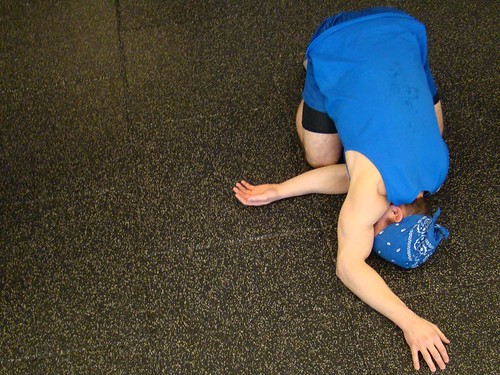 If you ask 10 athletes or 10 coaches what a warm-up is supposed to consist of – and why – there will probably be at least 7 different answers. The warm-up (and cool-down) - and their importance in an training session - tend to attract a lot of debate and discussion.
If you ask 10 athletes or 10 coaches what a warm-up is supposed to consist of – and why – there will probably be at least 7 different answers. The warm-up (and cool-down) - and their importance in an training session - tend to attract a lot of debate and discussion.
Some people will tell you that the warm-up is the time to stretch. Or is it the cool-down that is important for stretching? Do you need to stretch at all? Better yet, do you need to warm-up at all? Should I care? Does it really make that much difference?
There is very little consensus on what a warm-up should entail. Little consensus, and a great deal of misinformation and anecdotal experience thrown in for good measure.
So what is the purpose of the warm-up? Once again, the answer lies in the brain.
Most of the research on the warm-up was done in the ‘60s and ‘70s and was of poor quality. Andrea Fradkin, an exercise researcher at Bloomsburg University of Pennsylvania, noted that
“it is not known whether warming up is of benefit, of potential harm, or having no effect on an individual’s performance.”
That doesn’t sound terribly optimistic, does it?
A traditional perspective on the warm-up is that gentle movement prior to exercise will increase the blood flow to the muscles. With that in mind, if you have done enough activity to raise your core temperature, or break a sweat, then you are probably ready to get started with your training session.
Perhaps the primary benefit of the warm-up is the beneficial effects on the central nervous system (CNS) in preparing it for activity. The CNS has a huge impact on our ability to recruit muscle fibers and to do so to the extent and magnitude and quality that is required to perform any sport activity. In effect, a warm-up would need to include any activities that will fire up the central nervous system. An increased attentional focus during the warm-up would certainly help. But it would also include dynamic activities that require quick and strong muscular actions – once the body has been moving and the core temperature is elevated. These would serve to fire up the central nervous system and prepare it for the impending sport activity.
In the same breathe, this is exactly why stretching can be a counter-intuitive and potentially deleterious activity as part of a warm-up. If you are performing the traditional “slow-gradual-stretch-and-hold” technique advocated by countless trainers, PTs, chiropractors, and coaches around the world, then you would be intentionally getting the central nervous system to calm down, then initiating a sport activity in which it needs to be fired up. That would not be a good thing. Of course, there are many types of stretching, but buyer beware.
The slow, gradual type of stretching would be beneficial as part of the cool-down in which the athlete is trying to calm the central nervous system and begin the process of recovery.
Each training session needs to have an intent, and the same can be said for both the warm-up and cool-down activities.
What do you do as a part of your warm-up? And why do you do it? Better yet, why do you THINK you are doing it?
Photo credits: istolethetv

 "Running Injuries: Etiology And Recovery- Based Treatment" (co-author Bridget Clark, PT) appears in the third edition and fourth editions of "Clinical Orthopaedic Rehabilitation: A Team Approach" by Charles Giangarra, MD and Robert C. Manske, PT.
"Running Injuries: Etiology And Recovery- Based Treatment" (co-author Bridget Clark, PT) appears in the third edition and fourth editions of "Clinical Orthopaedic Rehabilitation: A Team Approach" by Charles Giangarra, MD and Robert C. Manske, PT.
 Allan Besselink, PT, DPT, Ph.D., Dip.MDT has a unique voice in the world of sports, education, and health care. Read more about Allan here.
Allan Besselink, PT, DPT, Ph.D., Dip.MDT has a unique voice in the world of sports, education, and health care. Read more about Allan here.
 Top 5 finalist in three categories: "Best Overall Blog", "Best PT Blog" and "Best Advocacy Blog".
Top 5 finalist in three categories: "Best Overall Blog", "Best PT Blog" and "Best Advocacy Blog".